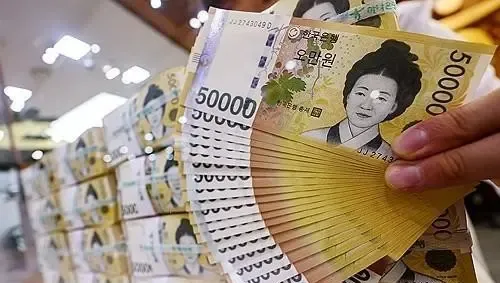Is South Korea's Money Supply Growing at Its Fastest Rate in 17 Months?

Synopsis
Key Takeaways
- August marked the fastest growth in South Korea's money supply in 17 months.
- M2 reached 4,400.2 trillion won (approx. $3.08 trillion).
- The rise in M2 was 1.3 percent from July.
- Year-on-year growth stood at 8.1 percent.
- The increase reflects rising demand deposits and investment funds.
Seoul, Oct 15 (NationPress) The money supply in South Korea surged at its most rapid pace in 17 months during August, fueled by increased financial resources amidst a robust stock market, as reported by the central bank on Wednesday.
According to preliminary figures from the Bank of Korea (BOK), the country's M2, a crucial indicator of money supply, reached 4,400.2 trillion won (approximately $3.08 trillion) in August, marking a 1.3 percent rise from the previous month.
This surge represents the highest monthly growth since March 2024, when M2 recorded a 1.5 percent increase.
Year-on-year, the M2 figure escalated by 8.1 percent in August, showcasing the sharpest annual growth since July 2022.
Since April, the reading has consistently risen, indicating an ongoing liquidity expansion within the financial system.
The M2 measure encompasses cash, demand deposits, and various easily convertible financial instruments.
The rise was attributed to a 14.3 trillion won increase in demand deposits month-over-month, while investment trusts expanded by 12.8 trillion won. Additionally, time deposits and installment savings with less than two years to maturity also saw a rise of 8.3 trillion won in August.
"Bond-type funds have shown consistent growth, and the rise in demand deposits is associated with temporary deposits from incoming funds awaiting investment due to a strong local stock market and increased fiscal spending by local governments," explained a BOK official.
In July, the money supply in South Korea also saw an uptick, driven by a boost in funds and deposits. The M2 stood at 4,344.3 trillion won (about $3.13 trillion) in July, reflecting a 0.8 percent increase from the previous month, as reported earlier by the BOK.
This upward trend in M2 has been ongoing since April. The M2 measure includes cash, demand deposits, and other easily convertible financial instruments, as stated by the Yonhap news agency.









